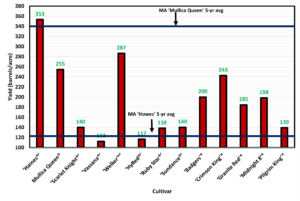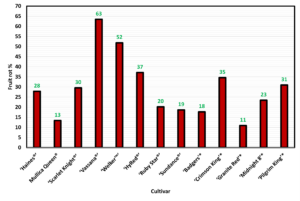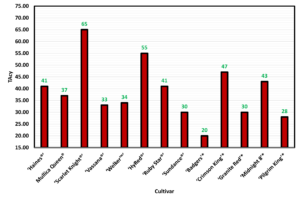Final report for ONE20-374
Project Information
Cranberry growers in Massachusetts (MA) are still reliant on old cultivars like ‘Howes’ (1843) and ‘Early Black’(1852). The aim of the project was to increase the profitability and sustainability of the MA cranberry industry by evaluating twelve new hybrid cultivars with improved yield, fruit quality, disease resistance, and size. The propagation of the new cultivars was started in March 2021 at the UMass Cranberry Station, East Wareham. The rooted cuttings were planted in June 2021. The trial was laid out in a randomized complete block design with four replications per treatment and buffer zones between treatments and reps. Normal cultural practices for new planting regarding irrigation, fertilization, pest control, and canopy management were followed. In 2022, the fruit was removed from the vines to allow all the resources to be allocated for canopy growth. In 2023, the new cultivars were harvested for the first time. At harvest, yield was measured by picking all fruit within a 0.093 m2 quadrat. The fruit samples were then sieved through an 8-mm opening to remove undersized berries; the remaining berries represented the yield of marketable berries. Additional samples (≈500 g) were collected from each treatment replication for fruit quality analysis. In terms of yield, Haines®, Welker™, and Crimson King were the most profitable, while Vassana® and HyRed® performed poorly, with the other cultivars in the mid-range. Scarlet Knight(r), HyRed®, and Midnight 8 had the best fruit color, while Badgers, Granit Red, Sundance, and Pilgrim King had poor fruit colors. The highest fruit rot incidence was observed in HyRed®, Welker™, and Vassana®, while Granit Red, Mullica Queen®, Badgers, and Sundance® had the lowest incidence. Fruit size measured as fruit diameter was largest in Badgers, Granite Red, Crimson King, and Haines®. In conclusion, data from the first year showed differences in the performance of the new cultivars under MA growing conditions. Additional data from multiple is still needed to provide growers with concrete recommendations.
The project seeks to evaluate twelve new hybrid cranberry cultivars with improved fruit quality, yield, and disease resistance. Data will be collected on yield, fruit quality, ease of establishment, and disease resistance. The questions we will answer are:
- Do the new hybrid cultivars outperform the cultivars currently grown in MA in terms of yield?
- Do the new hybrid cultivars have better fruit quality (fruit color, fruit firmness, internal quality, berry size) compared to the cultivars currently grown in MA in terms of yield?
- Do the new hybrid cultivars have a lower incidence of fruit rot and other diseases compared to the cultivars currently grown in MA?
- Do the new cultivars establish quickly (grow into all the available space) and come into full production earlier than the cultivars currently grown in MA?
- Do these new cultivars outcompete weed species found in MA, or do they need extra care in terms of weed control?
The project will benefit cranberry growers in MA by providing reliable information on yield performance, disease susceptibility and fruit quality of new hybrid cultivars under MA growing conditions. Growers will then be able to make informed choices when renovating their cranberry bogs.
The majority of cranberry acreage in MA is still under old cultivars with low productivity and poor disease resistance. The data in Table 1 represents the percentages of acreage of cultivars grown in MA as of 2017.
Table 1: Percentages of acreage and the five-year average yield of cranberry cultivars grown in MA as of 2017. The data was sourced from Ocean Spray and does not represent independent cranberry growers. Ocean Spray is a grower cooperative that represents 8,000 of the 13,000 acres under cranberry production in MA.
|
Cultivar |
% of acreage |
Commercial release |
5 yr. yield avg. in MA (barrels/acre) |
|
‘Stevens’ |
32.42 |
1940 |
221 |
|
‘Howes’ |
23.50 |
1843 |
142 |
|
‘Early Black’ |
19.83 |
1852 |
142 |
|
‘Ben Lear’ |
7.32 |
1900 |
247 |
|
‘Mullica Queen®’ |
6.10 |
2008 |
320 |
|
‘Crimson Queen®’ |
3.37 |
2007 |
258 |
|
‘Demoranville®’ |
1.98 |
2008 |
280 |
|
Unknown cultivars |
1.98 |
n/a |
n/a |
|
Mixed cultivars |
2.27 |
n/a |
n/a |
|
‘Grygleski 1’ |
0.46 |
1994 |
n/a |
|
‘McFarlin’ |
0.37 |
1874 |
n/a |
|
'‘HyRed®’ |
0.14 |
2003 |
n/a |
|
‘Sundance®’ |
0.17 |
2011 |
n/a |
|
‘Scarlet Knight®’ |
0.09 |
2012 |
n/a |
n/a - not available
The data shows that over 43.33 % of the acreage is still under the native cultivars ‘Early Black’ and ‘Howes’ “released” in 1852 and 1843 respectively. ‘Stevens’ and ‘Ben Lear’, which are the first generation of hybrid cultivars released in 1940 and 1900 respectively make up 39.74% of the acreage under cranberry production. Although ‘Stevens’ and ‘Ben Lear’ have higher yields, they were not specifically bred for disease resistance. Recently, disease resistance has become a desirable trait in cranberry production because of increased use restrictions on chlorothalonil which is a multisite inhibitor contact fungicide that is standard for fruit rot control (Wells et al., 2014). MA does not have an active cranberry breeding program, growers interested in new cultivars have to bring in new hybrids from the breeding programs in New Jersey and Wisconsin. However, since these new cultivars are not evaluated under MA growing conditions, they represent a substantial financial risk for growers. The cost of renovating a cranberry bog is $10,000 to $25,000 per acre. Considering all these factors, the MA cranberry industry should plant new hybrid cranberry cultivars with improved fruit quality, yield, and disease resistance when renovating. Improved fruit quality and yields will increase profitability for farmers and improved disease resistance will lower environmental and health risks in agriculture through reduced pesticide usage. Our solution is to conduct a trial of the latest commercially released cranberry hybrid cultivars with a partner farmer under MA growing conditions and collect data on cultivar performance so that our growers can make better financial decisions. Data will be collected on yield, disease incidence and ease of establishment. The experimental plots will also be made accessible to cranberry growers on field days, and growers will be able to walk through the demonstration plots. Data collected can be used by cranberry growers in MA when making decisions for renovating their bogs, lowering their financial risk of planting untested hybrid cranberry cultivars.
Cooperators
- - Producer
Research
- Establishment of cultivar trial
The project was carried out on a ≈0.75-acre commercial cranberry bog at the UMass Cranberry in East Wareham, MA (Latitude: 41.7748115; Longitude -70.6208475). The bog was renovated in spring 2021, applying 10 inches of sand to the existing planting. Drainage tiles and a sprinkler irrigation system will be installed during the bog renovation. The twelve hybrid cranberry cultivars that were evaluated are listed in Table 2.
Table 2: List of cultivars that were evaluated in the project.
|
Cultivar Name: |
Commercial release |
Summary of key attributes |
|
'Ruby Star®' |
2017 |
-Very strong yearly growth, strong bud sets, consistently high fruit yields |
|
'Sundance®' |
2014 |
-Large berry size, excellent bud set traits, high yield potential, fertilizer tolerance, can be scaled up to full production relatively quickly |
|
'HyRed®' |
2003 |
-Contains significantly higher red pigment, short seasonal maturity reduces the risk of crop damage due to unpredictable late-season weather events, excellent vigor, the yield is comparable to other commercial varieties. |
|
'Crimson King'* |
2017 |
-Highest yielding, high color throughout the canopy |
|
Badgers |
2017 |
-High yield, very large fruit |
|
'Pilgrim King'* |
2018 |
-Extremely large fruit, uniform color, high yield |
|
'Midnight 8'* |
2016 |
-High yield, very early color, excellent rebud |
|
'Granite Red'* |
2015 |
-Extremely firm fruit, excellent fresh fruit keeping quality, large fruit with uniform color |
|
'Haines®' |
2012 |
-High yield potential, mid-season ripening, large round berry (averaging about two grams per berry) and uniform fruit color |
|
'Welker™' |
2015 |
-High yields with early to mid-season ripening |
|
'Scarlet Knight®' |
2014 |
-Early ripening to a dark red, uniform color, lower titratable acidity, good keeping and storage properties |
|
'Vassana®' |
2017 |
-high yield, improved disease resistance, and good fruit color |
*These cultivars are not registered trademarks
'Mullica Queen®' was used as the standard control. 'Mullica Queen®' is a newer cultivar from New Jersey that does well in MA with the highest yields (Table 1). The experimental design was a randomized complete block design with four plot replicates for each cultivar. Each plot replicate will be ≈ 40 feet long, and 15 feet wide with 2 feet buffer rows left in between. Cranberry vines were sourced in December 2020 from the different breeding programs. The vines were stored in a cooler at the UMass Cranberry Station and propagated as cuttings in a greenhouse at the UMass Cranberry Station. Standard commercial greenhouse guidelines were followed during propagation. After planting, standard cultural practices were followed for fertilization, weed management, and irrigation.
- Data collection:
Year 1: Propagation of the rooted cuttings began in early March in the greenhouse and continued until April. At the same time in March, the renovation of Section 1 of State Bog (≈0.75 acres) at the UMass Cranberry Station was initiated. Initially, the project was going to be conducted at a grower collaborators' site. Unfortunately, because of some of the conditions that were imposed by one of the breeding programs, the location had to be shifted to the UMass Cranberry Station. The grower collaborator is still involved in the project, with regular meetings being held to discuss the progress of the project. The grower collaborator has also visited the new planting for an on-site meeting. The renovation included stripping off the top 10 inches of the bog and replacing it with new sand. A new irrigation and drainage system was also installed. The planting of the new cultivars started at the beginning of June and was finished by the end of June. The new cultivars were irrigated twice daily for 30 mins each, following guidelines for new cranberry plantings. The rooted plugs were planted at the industry standard 1-foot spacing. At planting, 50 lbs/A nitrogen and 100 lbs/A phosphorous were applied to the new planting following recommendations for new planting. After the roots were established, 10lbs nitrogen was applied every two weeks until mid-August. The new vines were successfully established with high colonization rates at the end of the growing season. At the end of the growing season in September, aerial imaging was done using a drone to quantify the establishment of the vines. The data is still being analyzed.
Year 2: To enable the evaluation of varietal performance under Massachusetts conditions, the following activities were carried out during the current reporting period (1) data collection with drones, (2) collecting vegetative samples for nutrient assessment, (3) preliminary fruit quality assessment (color and rot) (4) assessment of weed infestations (5) assessment of insect damage.
Data was collected using drones with red-green-blue (RGB) and multispectral cameras. The data images collected using drones were stitched together, and maps were created to evaluate the (1) establishment rate of the new cultivars and (2) health of the new cultivars using vegetation indices such as normalized difference vegetation index (NDVI). T
Fertilizer applications at the study site were managed as per current UMCS recommendations for new plantings. At the end of the growing season, samples were collected and sent for nutrient assessment to determine the response of the different cultivars to fertilizer application as per current guidelines. The results from plant tissue analysis are still being analyzed and will be used to adjust fertilizer recommendations for the coming growing season.
Fruit samples were collected at 2-week intervals for assessment of fruit color (Figure 3). The samples were stored in the freezer and will be used to assess fruit color using the total anthocyanin method (we had no access to the labs because of building renovations).
Weed infestations at the study site were managed as per current UMCS recommendations for new plantings of cranberry vines. Growers strive to maximize cranberry vines colonization in Years 1-3 by minimizing weed infestations. Weeds in new cranberry plantings are managed with the use of pre-emergence and postemergence herbicides and hand weeding. The following herbicides were applied to the study site in 2022: Devrinol 2XT (napropamide) at 9 qt/A on 20 May and 29 June; Callisto (mesotrione) at 8 oz/A on 6 June, and Intensity One (clethodim) at 16 oz/A on 6 June and 8 July. Periodic hand-weeding was performed as needed throughout the season. T
As of the 2022 growing season, as the canopy/planting was still establishing, we did not specifically observe any particular cultivar highly resistant or susceptible to diseases.
Year 3: To enable the evaluation of the performance of the new cultivars under Massachusetts conditions, the following activities were carried out during the current reporting period: (1) data was collected on bloom phenology, (2) vegetative samples were collected for nutrient assessment, (3) preliminary fruit color assessment (4) assessment of the sensitivity of the new cultivars to herbicide damage (5) assessment of insect damage and (6) yield data was collected at harvest.
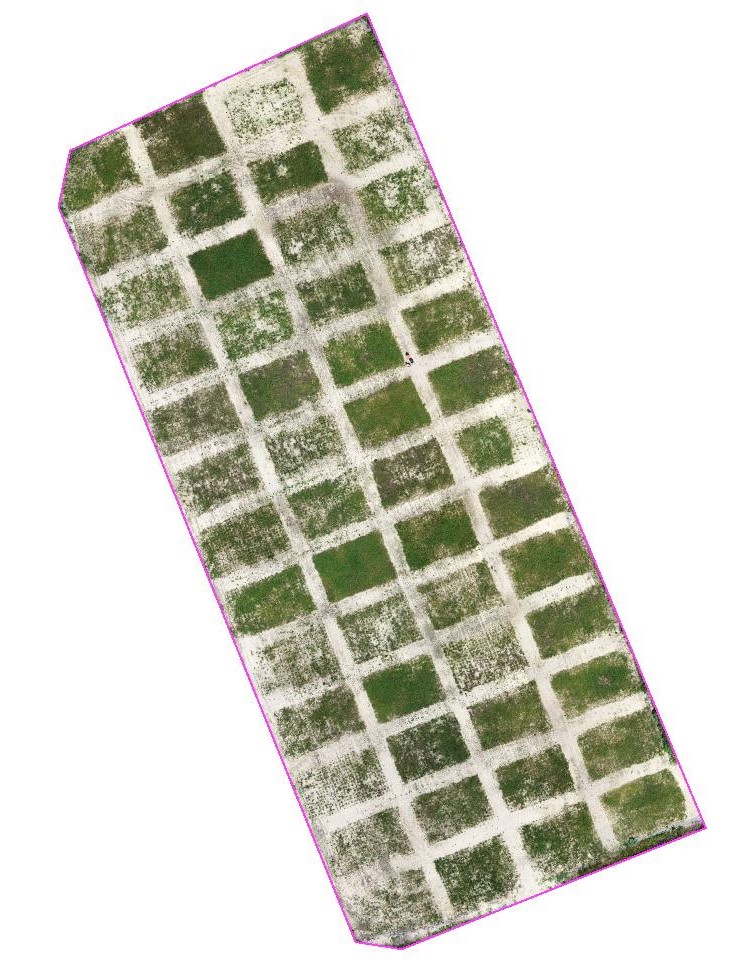
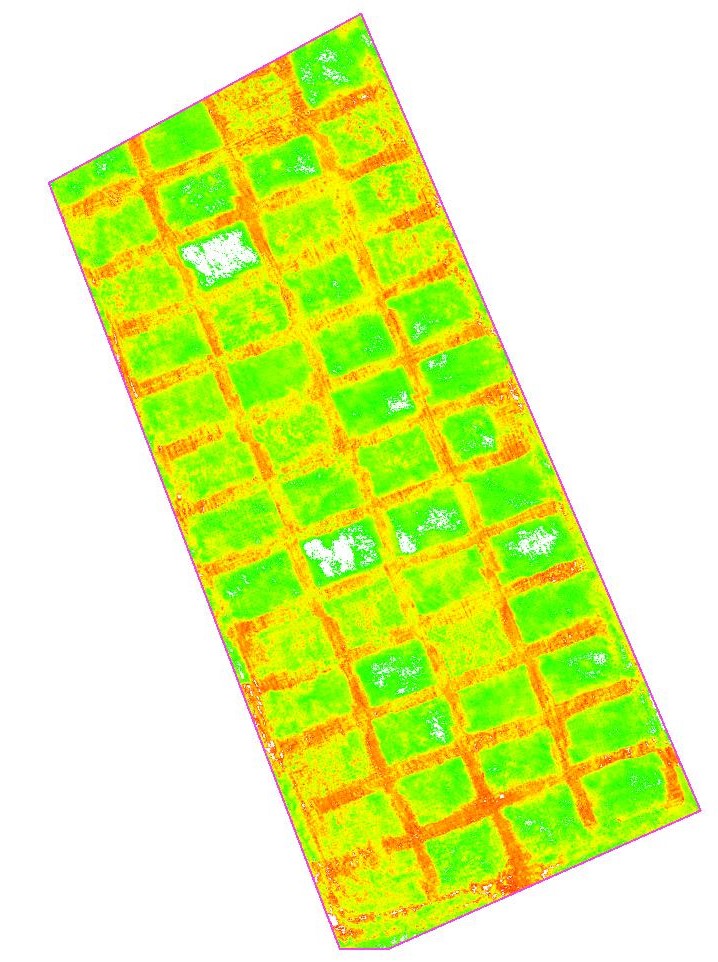
There were clear differences in establishment rates based on drone data (Figures 1 and 2). Vassana, Badgers, and Granite Red were the top-performing cultivars in the canopy establishment. The same trend applied to canopy health, with clear differences observed between cultivars(Figure 2).
The most common weeds in the study site were soft rush (Juncus effusus), haircap moss (Polytrichum spp.), crabgrass (Digitaria sanguinalis), and orange grass (Hypericum gentianoides). No insect damage was observed during the reporting period on the test plots.
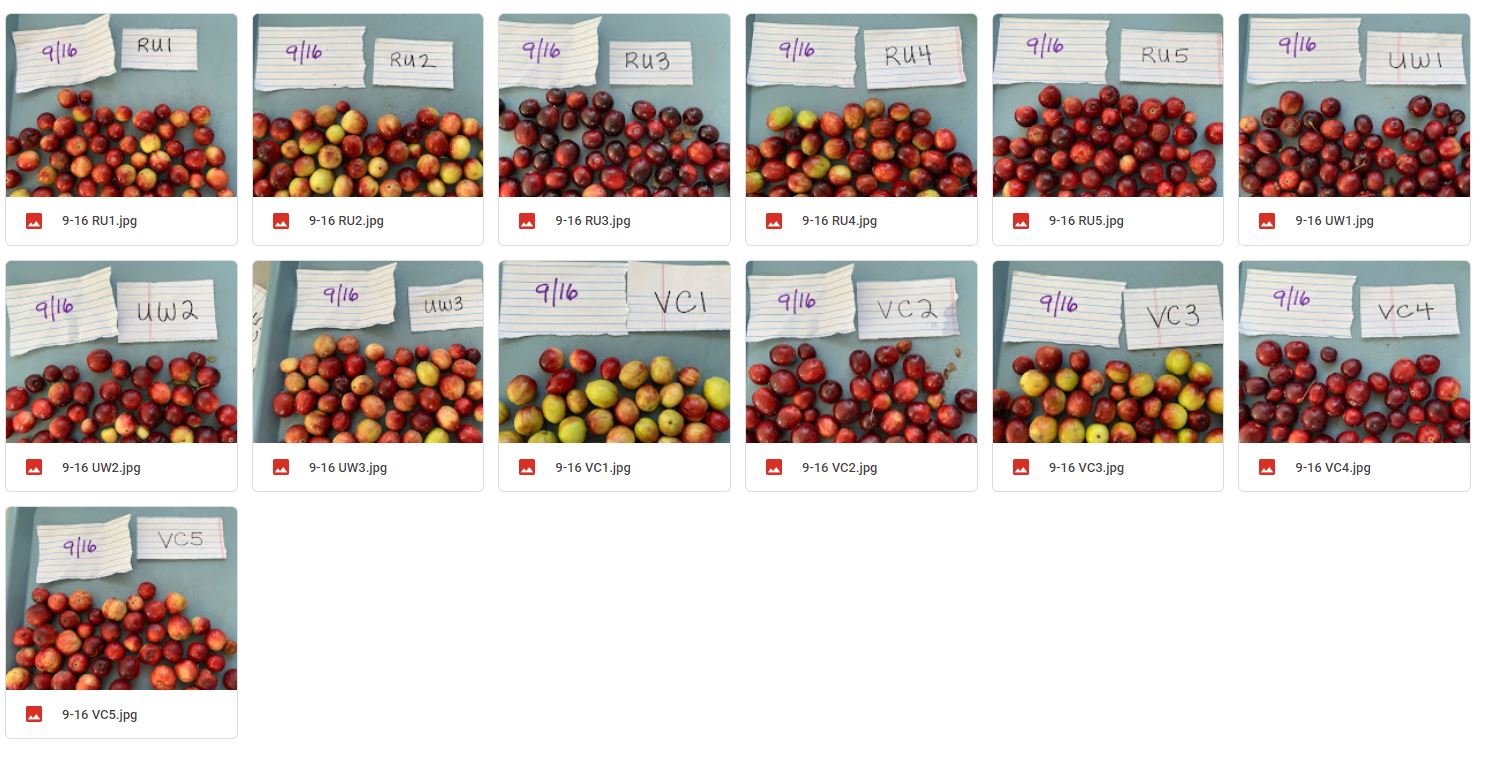
Figure 4. Yield results from year 3 of the study.
Haines® was the best-performing cultivar (FIgure 4). It produced 353 barrels per acre. It outperformed the five-year average yield of Mullica Queen®, which has the highest five-year average yield in MA. Welker™, Badgers and Crimson King yielded over 200 barrels per acre. Only two cultivars yielded lower Early Black, which currently has the lowest five-year average yield in MA.
Figure 5. Incidence of fruit rot harvest in the different cultivars.
In general, we had very high fruit rot incidence, which is expected in a new planting (Figure 5). Vassana® and Welker™ had the highest incidence of fruit rot (over 50%). Mullica Queen®, Sundance, Badgers, and Granite Red had the lowest incidence of fruit rot (less than 20 %).
Figure 6: Fruit color in the different cranberry cultivars measured as total anthocyanin content (TAcy).
As of the 6th of October, all the cultivars had total anthocyanin content (TAcy) values above 20, which is above the minimum required for harvest when using TAcy as a standard. The best color was observed in Scarlet Knight® and HyRed®. The development of TAcy is expected to change when the canopies are fully developed and more fruit become shaded within the canopy.
Multiple of seasons of data are still needed in order to draw conclusions on the performance of the new cultivars.
It has been successfully established and there is a lot of enthusiasm from the growers for the final results once the new cultivars reach full yield potential. Preliminary results on yield, fruit quality and fruit rot show that we are on the right track to answer the questions that we set out to answer i.e. of the cultivars, which are the best to grow under MA growing conditions?
The full outcomes from the project are expected to be realized after Year 5 when the cultivars being evaluated reach full production. After that, the benefits like reduced pesticides, increased yields, and profitability can be realised when growers start planting new cultivars. Meanwhile, Massachusetts cranberry growers gained awareness of new selections of varieties available from breeding programs in New Jersey and Wisconsin.
Education & Outreach Activities and Participation Summary
Participation Summary:
Outreach As proposed:
The UMass Cranberry Station has a well-established and robust extension support network in addition to the institutional capacity to disseminate the project’s results. The Cranberry Station has an “open door” philosophy that facilitates communication between the researchers, cranberry growers, and industry personnel. Educational materials will be developed and shared via different avenues. The different ways to share educational materials will include posters, fact sheets, Cranberry Station’s monthly newsletters, Cape Cod Cranberry Growers’ Association’s newsletter, online UMass ScholarWorks (digital library repository) and social media. The results from the project will also be disseminated to the broad network of cranberry growers and industry stakeholders through our annual workshops, field days, and extension outreach meetings. Annual webinars will be hosted to reach growers from other cranberry production areas that cannot physically attend our workshops and field days. The webinars will be posted on the Cranberry Station YouTube channel for future access. Results will also be communicated to the international cranberry research community at North American Cranberry Research and Extension Workers (NACREW) biennial meeting in 2023. At the end of the project, we will prepare manuscripts for publication in a peer-reviewed journal.
Progress ending 12/31/2021.
The Covid19 pandemic impacted certain extension outreach activities such as on-farm workshops/ field days, resulting in no in-person gatherings. That being said, extension outreach was carried out in other virtual meetings, a newsletter article, and social media as listed below.
- An overview of the project was presented to 178 Massachusetts cranberry growers during the virtual annual research update
meeting. 2021 Update Mtg_ Evaluation of New Hybrid Varieties with Improved - The progress of the project was shared in a newsletter disseminated to cranberry growers and stakeholders in
Massachusetts (238 subscribers). CRANBERRY STATION NEWSLETTER - The progress report was shared during the annual Cranberry Station Board of Oversight meeting. Mupambi G New Hybrids 2021
- A social media post about the project was shared on LinkedIn with 1364 views of the post in the feed. Post _ Feed _ LinkedIn
Progress ending 12/31/2022.
- The progress of the new trial.
- An overview of the project was presented to 160 Massachusetts cranberry growers during the virtual annual research update meeting. 2022 Update Mtg Jan 27: Update on New Variety Evaluations and PGR Trials
Progress ending 12/31/2023
- An overview of the project was presented to 172 Massachusetts cranberry growers during the virtual annual research update
meeting on 25 January 2023. 2023 Update Mtg Jan 25: New Cultivar Evaluation Update - We held a field day on September 7, 2023, to show growers the project's progress.
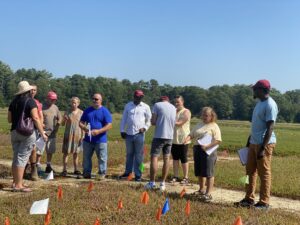
Cranberry growers participated in a field day to show the progress of the new cultivars. 
Learning Outcomes
Massachusetts cranberry growers gained awareness of new selections of varieties available from breeding programs in New Jersey and Wisconsin.
Project Outcomes
The full outcomes from the project are expected to be realized after Year 5 when the cultivars being evaluated reach full production. After that, the benefits like reduced pesticides, increased yields, and profitability can be realised when growers start planting new cultivars.
Even though the project is not yet complete, it has been successfully established and there is a lot of enthusiasm from the growers for the final results once the new cultivars reach full yield poetential. Preliminary results on yield, fruit quality and fruit rot show that we are on the right track to answer the questions that we set out to answer i.e. of the cultivars, which are the best to grow under MA growing conditions?
